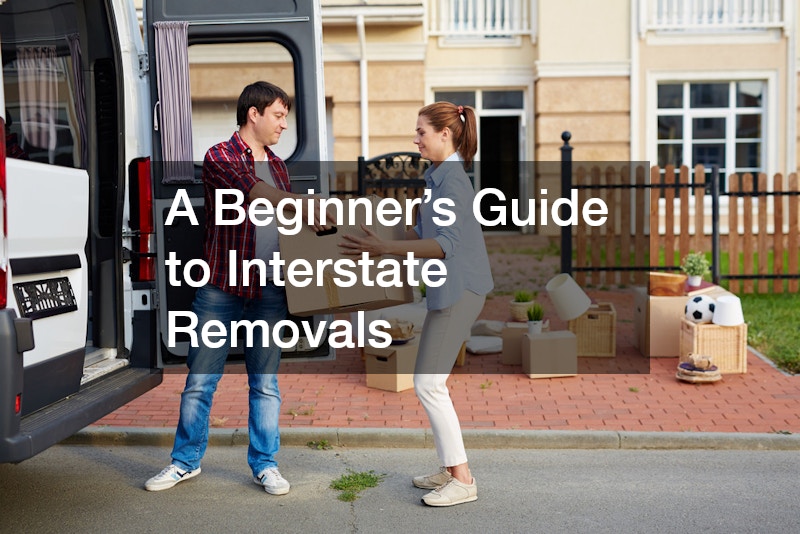Moving across state lines in Australia comes with unique challenges that can quickly overwhelm first-time movers. Unlike local moves, interstate relocations require more detailed planning, longer transit times and stricter coordination. Whether you’re relocating for work, lifestyle or family, understanding the process can help you avoid costly mistakes.
This guide covers the essentials for anyone preparing for interstate removals, from initial planning to settling into your new home.
Planning & Preparation: Start Early
Interstate moves demand forward thinking. The earlier you begin, the smoother the process.
Ideally, planning should begin two to three months in advance. Start by setting a clear moving date, especially if your schedule is tied to a job start or lease agreement.
Create a moving checklist with key dates for tasks like changing your address, booking a removalist, transferring utilities and updating licences or registrations. Some services, such as schools and health providers, may have waiting periods or require advanced notice. Taking care of these ahead of time prevents delays later on.
Choosing a Removalist & Comparing Quotes
Not all removal companies are created equal. Look for businesses that specialise in interstate removals, as they understand the logistics involved with long-haul relocations. They should hold the appropriate licences, offer transit insurance and have a reputation for reliability.
Request at least three quotes and be wary of unusually low prices—these may hide limitations on service or involve subcontractors. Ask what’s included: packing materials, loading, delivery timeframes and whether the company offers backloading (a cost-saving method where your goods share truck space with others heading the same way).
If you have pets or large vehicles, ask whether the provider can help with those too. Some companies offer full-service packages that include vehicle transport, pet relocation and short-term storage if needed.
Packing & Labelling: Stay Organised
Packing is often the most time-consuming part of moving. Start with items you use infrequently—such as seasonal clothes or decorations—and work your way towards everyday essentials. Aim to complete packing at least a week before the move.
Use quality boxes, bubble wrap and labelling materials. Clearly mark each box with the room it belongs to and a short list of contents. This helps both you and the movers when loading and unloading.
It’s also wise to pack a “first-night” box with essentials like toiletries, a change of clothes, important documents, chargers and basic kitchen supplies. Having this on hand saves you from digging through dozens of boxes after a long journey.
Transport & Timing: Know What to Expect
With longer distances come more variables. Weather, road closures or delays with shared loads can all affect timing. Ask your removalist for a realistic delivery window and stay in contact throughout the journey.
Be aware that not all companies deliver door-to-door. In regional or remote areas, goods may be delivered to a depot for collection. Clarify this before booking to avoid confusion on arrival.
It’s also a good idea to check access at both properties. Will the truck fit in the driveway? Are there stairs or elevators to consider? Notifying your removalist of these details in advance can prevent unexpected delays or surcharges.
Paperwork, Services & Utilities
Interstate moves involve more than just boxes. Notify Australia Post of your change of address and redirect mail for at least a few months. Update your address with banks, insurance providers, Medicare and other services.
You’ll also need to transfer utilities such as electricity, gas and internet to your new address. Give your current providers notice so final bills can be issued, and schedule connection dates with new suppliers to avoid arriving at a dark, disconnected home.
If you’re moving to a different licensing jurisdiction (for example, from NSW to QLD), you’ll need to update your driver’s licence and vehicle registration within a set period—usually a few months. Each state has different requirements, so check with the relevant road authority.
Settling In & Adjusting to a New Routine
Once you’ve arrived, take your time to settle in. Prioritise setting up the main living areas like the kitchen, bathroom and bedrooms first. These are the rooms you’ll use immediately and having them in order can create a sense of calm in the early days.
Explore your new neighbourhood gradually. Locate nearby supermarkets, medical centres, schools, parks and transport hubs. If you’re working remotely or managing school enrolments, ensure your internet and utilities are fully operational from day one.
A successful move isn’t just about getting your belongings from one place to another. It’s also about feeling comfortable, safe and at home in your new environment.
Interstate removals can be complex, but with the right preparation and professional support, they don’t have to be stressful. Starting early, staying organised and working with experienced providers can make all the difference.
By understanding what’s involved and taking control of each step, you’ll feel confident and ready to settle into your new home. Whether you’re moving for a new job, a fresh start or family reasons, a well-executed relocation sets the tone for the next chapter in your life.
If you’re planning your first big move, use this guide as a foundation for a smoother, more efficient experience.
.

